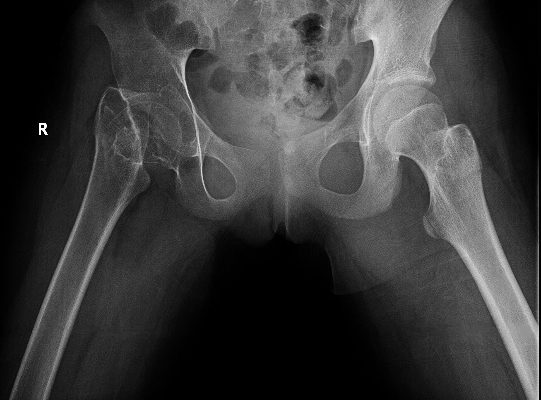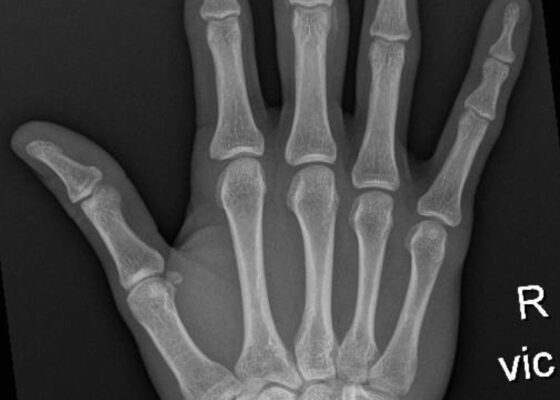Issue 5:2
Family Game Show-style Didactic for Teaching Nervous System Disorders during Emergency Medicine Training
DOI: https://doi.org/10.21980/J8D357By the end of this didactic exercise the learner will: 1) name 13 important neurologic conditions related to emergency medicine: TPA (tissue plasminogen activator) contraindications/TPA eligibility, optic neuritis, botulism, giant cell (temporal) arteritis, viral encephalitis, neurocysticercosis, rabies, myasthenia gravis, neurosyphilis, status epilepticus, Bell’s palsy, dementia vs. delirium, acute inflammatory demyelinating polyneuropathy (Guillain-Barré); 2) recognize five pattern words associated with each neurologic condition; 3) understand exam findings, diagnostic tests, and/or treatments for 13 important neurologic conditions.
A Just-in-Time Video Primer on Pneumothorax Pathophysiology and Early Management
DOI: https://doi.org/10.21980/J8891JBy the end of this module, participants should be able to: 1) review the normal physiology of the pleural space; 2) discuss the pathophysiology of pneumothorax; 3) describe the clinical presentation of pneumothorax; 4) identify pneumothorax on a chest radiograph; and 5) review treatment options for pneumothorax.
Necrotizing Fasciitis
DOI: https://doi.org/10.21980/J84M1DAt the conclusion of the simulation session, learners will be able to: 1) Describe the spectrum of clinical presentations of necrotizing fasciitis. 2) Identify the microbial etiology of necrotizing fasciitis. 3) Describe the empiric antibiotics appropriate for necrotizing fasciitis. 4) Describe benefits and limitations of various imaging studies when working up necrotizing fasciitis.
Blast Crisis
DOI: https://doi.org/10.21980/J8W35KBy the end of this simulation, the participant will be able to: 1) create a thorough differential for the undifferentiated febrile, altered patient, 2) identify the signs and symptoms of blast crisis, 3) describe proper resuscitation of a patient in blast crisis, and 4) describe the indications, steps, and contraindications of performing a lumbar puncture.
Primary Measles Encephalitis
DOI: https://doi.org/10.21980/J80S75At the conclusion of the simulation session, learners will be able to: 1) Obtain a relevant focused history, including immunization status, associated symptoms, sick contacts, and travel history. 2) Develop a differential for fever, rash, and altered mental status in a pediatric patient. 3) Discuss management of primary measles encephalitis, including empiric broad spectrum antibiotics and antiviral treatment. 4) Discuss appropriate disposition of the patient from pediatric emergency departments, community hospitals, and freestanding emergency departments, including appropriate time to call for transfer and the appropriate time to transfer this patient during emergency department (ED)workup. 5) Review types of isolation and indications for each.
High Altitude Pulmonary Edema
DOI: https://doi.org/10.21980/J8C35XAt the conclusion of the simulation session, learners will be able to: 1) obtain a thorough history relevant to altitude illnesses; 2) develop a differential for dyspnea in a patient with environmental exposures; 3) discuss prophylaxis and management of HAPE; 4) discuss appropriate disposition of the patient including descent and subsequent appropriate level of care.
An Innovative Inexpensive Portable Pulmonary Edema Intubation Simulator
DOI: https://doi.org/10.21980/J8MM1RBy the end of the session, learners will be able to: 1. Discuss the pathophysiology of, and immediate stabilization management steps for, acute cardiogenic pulmonary edema. 2. List the indications, contraindications, and risks associated with intubating a patient with acute cardiogenic pulmonary edema. 3. Demonstrate effective communication and teamwork skills to manage the airway of a simulated patient in respiratory distress due to acute cardiogenic pulmonary edema. 4. Successfully and safely intubate a simulated patient with a difficult airway due to visual obstruction from frothy pulmonary edema secretions.
Innovations in Airway Education: 3D Printed Neonatal and Pediatric Needle Cricothyrotomy Trainers
DOI: https://doi.org/10.21980/J8R928By the end of this educational session, participants should be able to: 1) discuss indications and contraindications for needle cricothyrotomy in the pediatric population; 2) assemble the equipment needed to complete a needle cricothyrotomy; 3) describe and perform the steps of neonatal and pediatric needle cricothyrotomy; 4) discuss post-procedure ventilation options.
Case Report of Untreated Pediatric Femoral Neck Fracture with Osteopenia
DOI: https://doi.org/10.21980/J8S92KOn her right hip radiograph, the patient was found to have a right femoral neck fracture with superior displacement of the intertrochanteric portion of the right femur. Moreover, the radiograph demonstrated diffuse osteopenia of the right hip and femur from chronic disuse as characterized by the increased radiolucency of the cortical bones compared to the left side.
High-Pressure Hand Injection Injury Case Report
DOI: https://doi.org/10.21980/J8NM0PX-rays of his right hand revealed extensive infiltrates of the right distal and middle phalange without fractures or dislocations.
1›
Page 1 of 2


